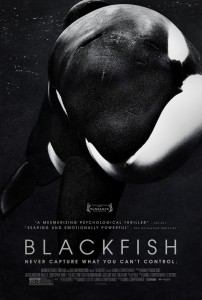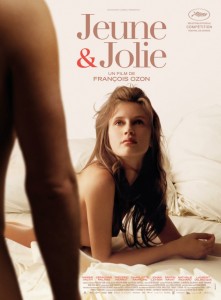As
I mentioned about last night’s There Are Monsters, I’m no fan of the found-footage genre. And yet I thought Jay Dahl managed to take it to a new, almost abstract place in his film. And to the makers of
V/H/S 2, I want to say I was impressed with how you creatively shoe-horned the conceit into your anthology horror—how so many people, in such different ways, might utilize video cameras to capture terrible, terrible things.
I was less impressed with the framing device, by Simon Barrett. Just silly, really. The first short, Adam Wingard’s POV tale of a guy with an eye-implant who starts to see ghosts was technically pretty impressive, but otherwise didn’t do much for me, especially when the mysterious and helpful stranger Clarissa insists on having sex with our guy as a way to make the ghosts go away. Suuuure, that makes a lot of sense.
The next segment from The Blair Witch Project‘s Eduardo Sanchez and Gregg Hale is a lot more fun, cleverly putting us in (or on) the head of a ravenous zombie. Especially enjoyed the entree of raw bowel with a side of fingers.
The third section, by Timo Tjahjanto and Gareth Huw Evans, was truly and impressively horrific, depicting a satanic cult on the big day when their saviour appears on earth. It might have been my favourite, but for the sadly ridiculous goat-headed demon at the close that kind of spoiled it, even though the same shot includes the greatest string of human snot ever put to film, I’d wager.
Leaving Jason Eisener’s segment to the end turned out to be the right idea: his alien abduction short is both hilarious and frightening. In other words, typical excellent work from the director of Treevenge. I loved the creative use of light, the performances by his young cast, and the excellent sound editing when the aliens make their presence known. Felt very sad about Riley The Dog at the end, but I know he’s actually fine since he made an appearance at the screening.
One of the great things the AFF is doing this year is screening a host of French films, a few from Quebec’s booming industry and a few from France. As I went in to see Jeune & Jolie, I tried to remember the last French-from-France movie I’d seen at an Empire Theatre. Hmmm. Been awhile. I don’t think since Holy Motors, and that was at last year’s AFF.
I’ve been thinking quite a bit about cultural cliches in the past couple of days, and I have to admit, the French have some of the best: a fascination with sex, innocence, and older men coveting the beauty of younger women. François Ozon (8 femmes, Swimming Pool) is well-known for his frank, adult takes on sexuality and those other preoccupations mentioned above.
This time out he’s found a stunning and astonishingly self-possessed ingenue, Marina Vacth. She’s Isabelle, a 17-year-old who we first meet through the gaze of her little brother’s binoculars as she sunbathes like Pauline a la Plage. She’s on her summer vacation with her well-off family and their friends. Curious about sex, she loses her virginity on the beach to a nice German fellow while her “innocent self” stands and watches in disappointment.
Back in Paris, she naturally becomes a prostitute, with most of her johns men in their 50s and 60s. As we attempt to glean an intent from the many close-ups of the symmetrical planes her face, I couldn’t help but think I was watching a very male fantasy play out—in an admittedly entertaining and stylish fashion. Eventually, Isabelle’s activities are discovered, and the drama makes that sudden, quantum leap into melodrama, complete with occasional sugary Françoise Hardy chansons. Before it’s all over, Charlotte Rampling shows up. Of course.

I was never a fan of marine mammal parks. I went to one in South Africa when I was a kid, and I guess it didn’t grab me. In the years since, I could never reconcile having orcas and dolphins perform for my pleasure, these magnificent animals that, in the wild, could travel around the world if they felt like, restricted to these small oceanarium spaces. Now that I’ve seen Blackfish, I’m even less inclined to ever go to one. I don’t think we should keep whales in captivity at all.
The film is a very compelling piece of advocacy. It provides a history of these parks and the capture of orcas in the wild. It follows the life one killer whale in particular, Tilikum, who performed at a British Columbia park before being transferred to SeaWorld in Orlando. Through interviews with former trainers, Sea World employees and experts on marine mammals, we see how Tilikum was involved in the deaths of three people. It’s nature doc-as-preocedural, building a character assessment of this particular animal and others like him. It’s also very clear from the documentary that SeaWorld doesn’t want this stuff publicized.
I also realize that this is a film with an agenda. So as soon as I got home, I did a bit of digging and found out that between the time
Blackfish premiered at Sundance in January, and its theatrical release in the US in July, SeaWorld released a statement refuting many of the claims made in the film. I’m not terribly convinced by SeaWorld’s arguments, but if you’ve seen
Blackfish, click
here to read the SeaWorld press release and reactions to it. For more reading, check out this
piece from The Guardian and another
from National Geographic.








